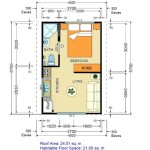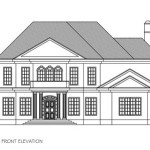Student Housing: Exploring Floor Plans for a Comfortable Living Experience
Stepping into the realm of higher education often marks a new chapter in a student's life, filled with excitement, challenges, and the need for a comfortable living space. Student housing plays a crucial role in providing a conducive environment for academic success and personal growth. In this article, we delve into the world of student housing floor plans, exploring their significance, types, and essential considerations for creating an ideal living space.The Significance of Floor Plans:
Floor plans serve as a blueprint for the layout and arrangement of a student housing unit. They provide a clear understanding of the spatial relationships between different rooms, common areas, and amenities. A well-designed floor plan can optimize space utilization, ensure privacy, and foster a sense of community among residents.Types of Student Housing Floor Plans:
1.Single-Occupancy Rooms:
These rooms are designed for individual students, offering a private sleeping area, study space, and sometimes a bathroom. 2.Double-Occupancy Rooms:
Double rooms accommodate two students, typically sharing a bedroom, bathroom, and living space. This option is ideal for students seeking a shared living experience. 3.Multiple-Occupancy Suites:
Multiple-occupancy suites house three or more students in a single unit. They typically include a shared living area, bedrooms, and bathrooms. This arrangement often fosters a close-knit community among residents. 4.Apartments:
Student apartments are self-contained units that provide students with a fully equipped living space, including a kitchen, bedroom(s), bathroom(s), and living room. Apartments offer a higher level of privacy and independence.Essential Considerations for Ideal Floor Plans:
1.Space Utilization:
Efficient use of space is crucial in student housing. Floor plans should maximize living space while accommodating essential furniture and amenities. 2.Privacy:
Ensuring privacy for each resident is essential, especially in shared living situations. Private bedrooms and well-designed bathrooms contribute to a comfortable living environment. 3.Natural Light:
Access to natural light is vital for mental well-being and productivity. Floor plans that incorporate large windows and balconies allow for ample sunlight and ventilation. 4.Safety and Security:
Safety is a top priority in student housing. Secure entrances, well-lit common areas, and emergency exit plans are crucial considerations. 5.Accessibility:
Floor plans should be accessible to all students, regardless of their abilities. Ensuring wheelchair accessibility, ramps, and elevators creates an inclusive living environment. 6.Sustainability:
Incorporating sustainable design elements, such as energy-efficient appliances and low-impact materials, can promote eco-consciousness among students. 7.Community Spaces:
Common areas play a significant role in fostering a sense of community. Well-designed student housing floor plans include lounge areas, study rooms, and outdoor spaces for residents to interact and socialize. Choosing the right student housing floor plan is an important decision that can impact a student's living experience and academic success. By considering the types of floor plans available, essential design considerations, and personal preferences, students can find a living space that aligns with their needs and enhances their overall university experience.
Student Housing Floor Plans Apartment Home Design Hostels

Mccarthy Hall Floor Plans Ku Student Housing

Student Housing 3d Floor Plans North Dakota

Student Housing 3d Floor Plans North Dakota

Templin Residence Hall Floor Plans Ku Student Housing

Floor Plans Inspiration By Altro

Image Result For Student Accommodation Floor Plans House Bedroom Four

Residence Life And Housing Floor Plans Wright State University

Student Housing People S Park

Stouffer Place Floor Plans Ku Student Housing








